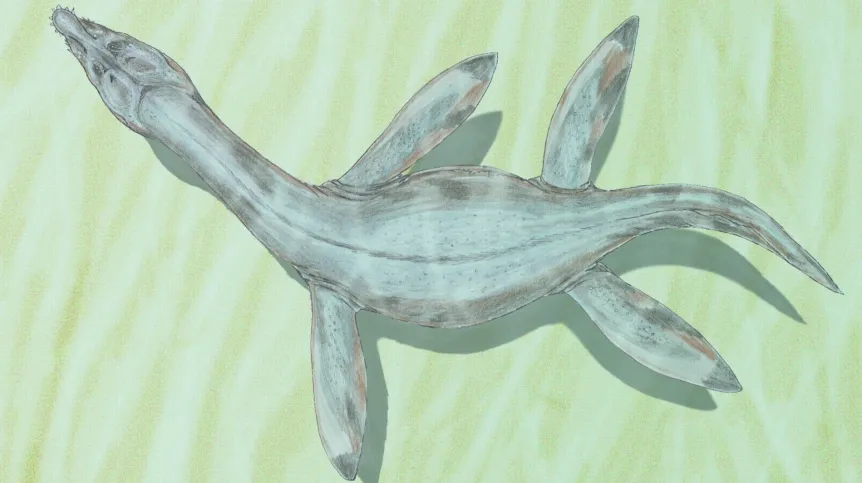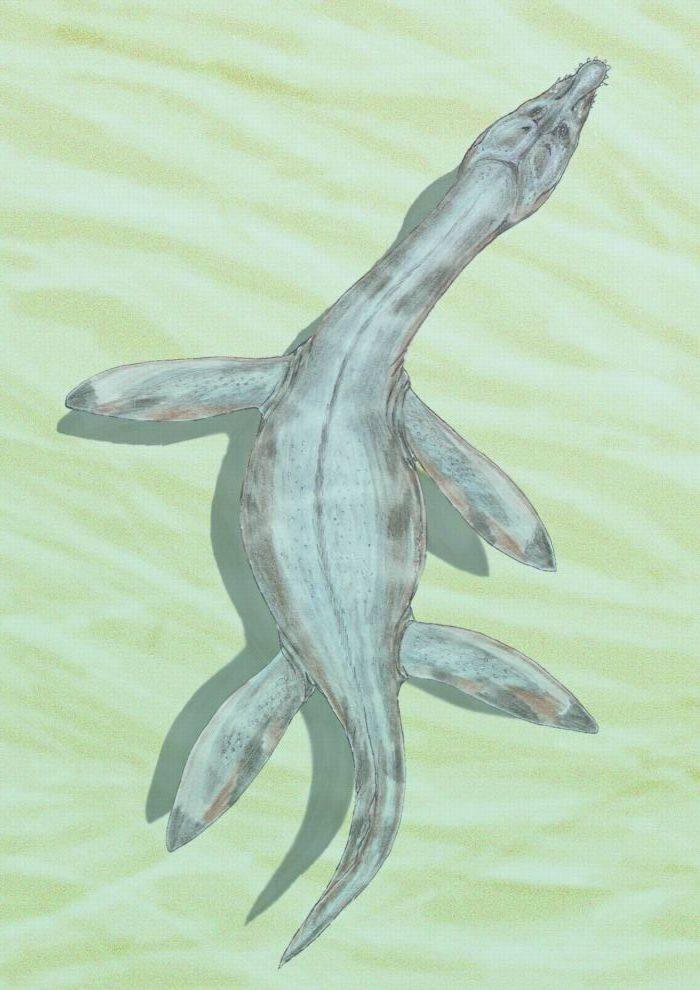
The marine reptile Trematospondylus macrocephalus was described in 1858; it is one of the oldest plesiosaurs known to science. However, it was soon forgotten - until now. New research shows that it is an important piece in the evolutionary puzzle of this group.
The fossil material from over 165 million years ago consists of seven vertebrae, including most likely a sacral vertebra and several tail vertebrae with a diameter of approximately 10 cm, found in south-western Germany. The fossils is part of the collection of the Palaeontology Department and Museum of the University of Tübingen (Germany).
'We knew that the vertebrae had already been examined and that this was one of the oldest plesiosaur specimens ever described. But since the first and so far only research was carried out we decided to describe this material in detail, illustrate it and assess its phylogenetic relationship, using much more advanced technologies than those available in the mid-19th century,’ says study co-author Dr. Daniel Madzia from the Institute of Paleobiology of the Polish Academy of Sciences.
It turned out that the vertebrae belonged to a large individual - very large for that period (the Middle Jurassic).
'We showed that Trematospondylus most likely belonged to the predatory plesiosaurs of the Rhomaleosauridae group and was a large representative of this archaic evolutionary branch. It seems that the animal that was the source of the fossil material we examined could have reached over 6 meters in length. These fossils add another building block to the rare fossil record of romaleosaurs from the Middle Jurassic and expand the limited knowledge about the diversity of plesiosaurs in the Pre-Celian Middle Jurassic, over 165 million years ago,’ the palaeontologist says.
He explains that although the Trematospondylus fossil material is definitely not the most complete among plesiosaurs, it is extremely important for understanding the evolution of this group of reptiles during the period of major changes in marine ecosystems. 'It has been known for a long time that at the turn of the Middle Jurassic, shortly before the appearance of Trematospondylus, there were significant changes in the composition of marine fauna. However, due to the extremely sparse record of plesiosaurs from this period (primarily from the beginning of the Middle Jurassic), we do not know what impact these changes in marine ecosystems had on the evolution of plesiosaurs - including romaleosaurs.’

Romaleosaurs were large predators at the top of the food chain in marine ecosystems during the Early Jurassic period. Although they survived until the end of the Middle Jurassic, they were no longer dominant for some time; this role was taken over by pliosaurs. Recent research conducted by Dr. Madzia suggest that large pliosaurs had existed for about 170 million years. Studies of the Trematospondylus show that large pliosaurs and romaleosaurs had coexisted for several million years.
The paleontologist also adds that the results of their research show how much we still do not know about marine ecosystems from the turn of the Middle Jurassic.
Find out more in the source publication published in the Journal of Vertebrate Paleontology. (PAP)
PAP - Science in Poland, Agnieszka Kliks-Pudlik
akp/ bar/ kap/
tr. RL













